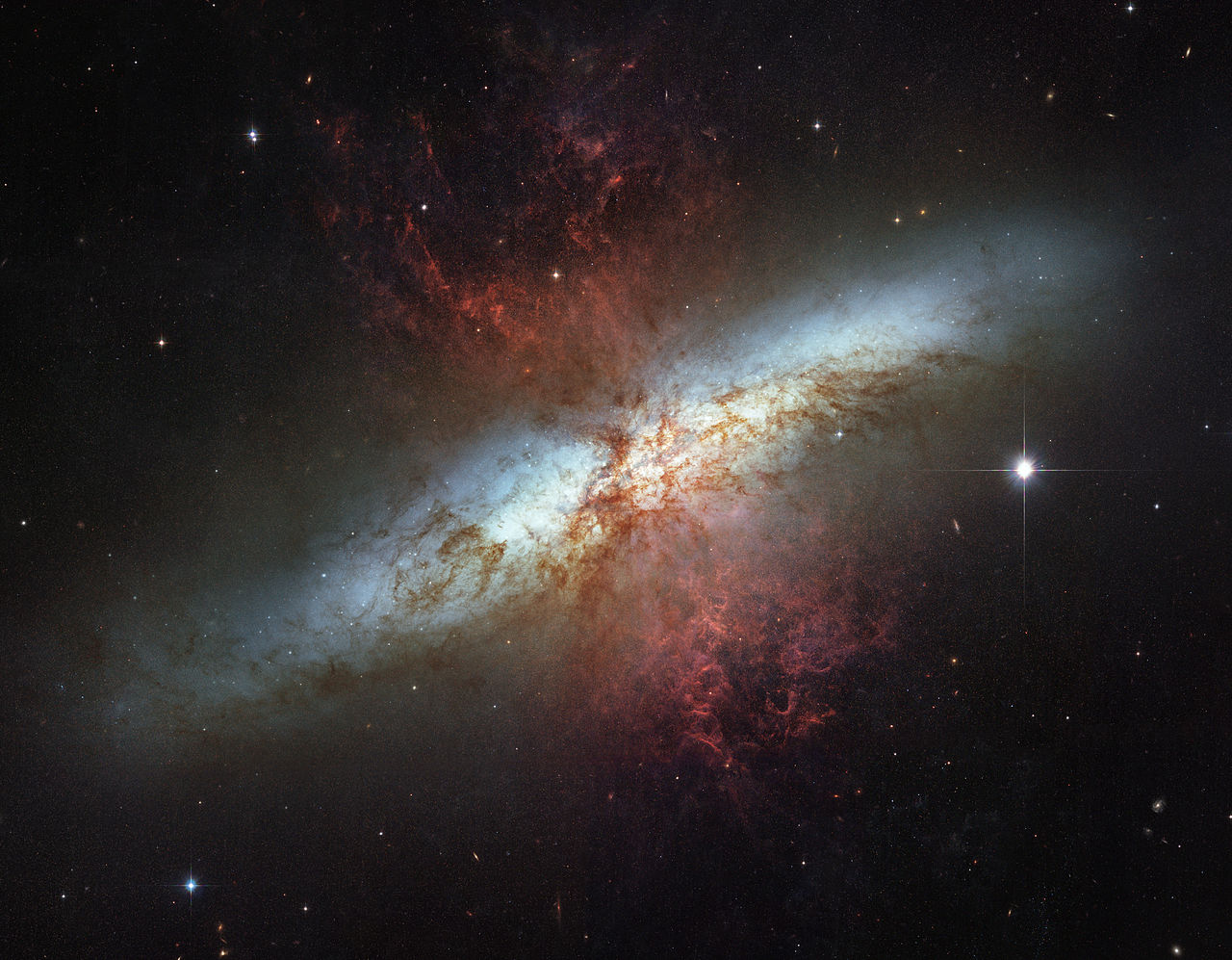We and everything that surrounds us is 50% made up of matter that came here from distant galaxies.

Astrophysicists from Northwestern University recently published the results of their long-term study. Scientists say that the conclusions of their work are unambiguous: about 50% of the matter of which we are all and everything that surrounds us comes from distant galaxies. We are talking about ordinary matter, not dark or some other. This applies not only to the Earth or the Solar System, but to the entire Milky Way galaxy. So, figuratively speaking, we are all children of the Universe.
Astrophysicists in their work used a supercomputer, which simulated the development of galaxies and individual star systems. As a result, it turned out that in the process of the formation of the galaxy they actively exchange matter. Yes, this process takes hundreds of millions, billions of years, but it goes on. One of the reasons for this exchange is the Supernova explosion, when matter is transferred from one galaxy to another or other galaxies, sometimes overcoming millions of light years.
“If we take into account the amount of“ external ”matter that is our part, we can be called intergalactic travelers or even galactic immigrants,” said Daniel Angles-Alcazar, member of the project team, employee of CIERA (Center for Interdisciplinary Exploration and Research in Astrophysics . He It also says that a significant part of the Milky Way was once a component of other galaxies, but then, having overcome thousands of light years of intergalactic space, it came to us.
')
As you know, galaxies are separated from each other at a considerable distance even by cosmic standards. So, even if we assume that the speed of movement of matter in space is several hundred kilometers per second, the migration of matter takes tens, hundreds of millions, or even billions of years. Research participants say that the results of the project changed their understanding of the formation of galaxies after the Big Bang.

The project development models of the Universe participants were helped by their colleagues from FIRE (“Feedback In Realistic Environments”), another project that is developing a mathematical apparatus for modeling the evolution of the Universe. As a result, scientists were able to observe the alleged events, which are billions of years from us, in the form of a visual model. In the same way, experts observed the movement of matter from the galaxy and into the galaxy. The study involved supercomputer powers equivalent to several million hours of continuous computing.
“What we now know in our project — half the volume of all the matter that surrounds us and of which we consist, including the Earth and the Solar System — came here from distant galaxies located in millions of light years,” the head of the project said.
The process of exchanging matter turned out to be quite complicated, with the gas often leaving small galaxies to larger ones, where this matter became part of the star formation process. Sometimes the “galactic wind” helped galaxies to grow rapidly in size, and then they grew twice.
“In the course of the simulation, we were able to track the development of galaxies like the Milky Way and determine where stars were formed from native matter, and where from matter come from another galaxy,” said Angles-Alcazar.

Scientists were surprised at how interrelated all processes in the Universe were, and how infinitely distant, as it might seem, objects interact with each other. Now science has obtained new data that will help to somewhat modify the idea of the formation of galaxies and groups of galaxies. However, before redrawing anything, it is necessary to obtain reliable evidence that the simulation reflects the real state of affairs. In order to do this, the project team intends to collaborate with representatives of the Hubble telescope team.
The study itself is supported by organizations such as NASA, NSF, CIERA. It is a question of both financial, material, and information support. More details about the results of studying the formation of galaxies can be found here .
Source: https://habr.com/ru/post/373679/
All Articles